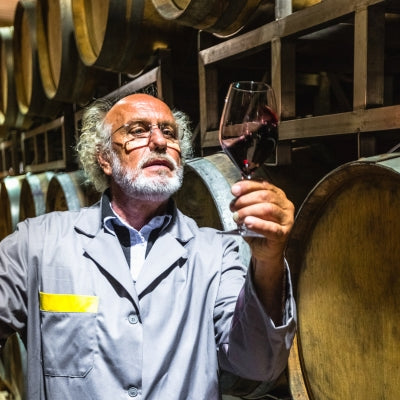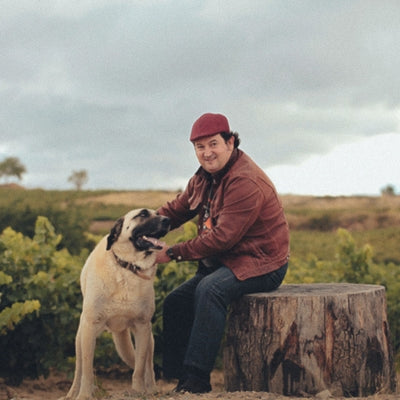
Malolactic fermentation: promotion or prevention
In the third part of our article series on malolactic fermentation, Westgarth Wines wine specialist Maurizio Broggi looks at how winemakers promote or prevent malolactic fermentation, and what happens when things go wrong.
Promotion of malolactic fermentation
Malolactic fermentation is not correlated with alcoholic fermentation and in most cases takes place after alcoholic fermentation has been completed. The winemaker can promote the onset of malolactic conversion and control its progress by manipulating temperature, sulfur dioxide, pH, and the availability of nutrients for lactic acid bacteria.
Temperature
Temperature is one of the most critical parameters for a successful malolactic fermentation. The optimal temperature for lactic acid bacteria to grow a sufficient population for malolactic conversion is above 20°C/68°F. Temperatures below 15°C/59°F tend to inhibit bacteria, preventing malolactic from happening.
Acidity
Wine’s pH also strongly influences lactic acid bacteria. Malolactic is promoted in wines with a pH above 3.3, it becomes more difficult below 3.3 and lactic acid bacteria are almost completely inhibited at pH below 3.0.
Sulfur dioxide
Sulfur dioxide is a critical additive in winemaking thanks to its antioxidant and antimicrobial properties. However, sulfur dioxide’s antimicrobial property makes it toxic to lactic acid bacteria. Consequently, winemakers should maintain a low sulfur dioxide process before beginning alcoholic fermentation and avoid any addition of sulfur dioxide afterward to allow lactic acid bacteria to grow and be active.
Nutrients
Finally, lactic acid bacteria need nutrients to grow. Once the alcoholic fermentation has finished, most nutrients have been depleted by yeasts. Coincidentally, after yeasts finish fermenting sugars, their cells begin to die producing lees (dead yeast cells). This leads to yeast autolysis, the process where the yeast cell walls break down and the yeast components are released into the wine, providing nutrients such as amino acids to lactic acid bacteria.
Prevention of malolactic fermentation
Where malolactic fermentation is not required the winemaker will manipulate the same factors that influence the growth and survival of lactic acid bacteria, notably temperature, nutrients, and sulfur dioxide, to prevent malolactic conversion from occurring. In particular, keeping the temperature below 15°C/59°F, racking off the lees early, and adding sulfur dioxide as soon as possible after alcoholic fermentation will prevent the onset of malolactic fermentation.
When to start malolactic fermentation
While it is possible to inoculate for malolactic fermentation using cultured lactic acid bacteria, it is often unnecessary, since the indigenous lactic acid bacteria present in the cellar and vessels will typically initiate the fermentation spontaneously. Due to the unsuitable conditions for the bacteria before and during fermentation, malolactic conversion usually takes place once alcoholic fermentation has finished. However, this is not the only possibility for the winemaker. Thanks to the availability of cultured strains of lactic acid bacteria, winemakers can now decide when to begin the malolactic conversion.
The inoculation of lactic acid bacteria before alcoholic fermentation has finished has some advantages, notably the lower alcohol content (beneficial for the bacteria), increased fruit character, and shorter production times. However, early inoculation of lactic acid bacteria (before or during alcoholic fermentation) also has risks and disadvantages. Indeed, having alcoholic and malolactic fermentation taking place at the same time may result in negative interactions between yeasts and lactic acid bacteria, which may cause sluggish or stuck fermentation as well as the production of volatile acidity.
When things go wrong
Lactic acid bacteria are essential in winemaking as they are the microorganisms that carry out the malolactic conversion process. However, if not properly managed and monitored, they may cause serious spoilage. If left uncontrolled and in the presence of oxygen and sugar, lactic acid bacteria can produce volatile acidity. In the absence of malic acid, lactic acid bacteria may metabolize or degrade sugars, tartaric acid, and glycerol resulting in off-flavors, turbidity, and bitterness.
Some species of lactic acid bacteria have been found responsible for producing biogenic amines which may cause allergic reactions in humans. Lactobacillus has been found involved in mousiness, an obnoxious taint that was once very rare but has become nowadays more common due to the rise of natural wines and the increasing trend of using lower or no additions of sulfur dioxide.
If wine is bottled containing malic acid, it runs the risk of undergoing malolactic fermentation in the bottle. The carbon dioxide produced during malolactic will render the wine slightly fizzy along with reduced fruit character, unpleasant milky off-flavors, and cloudiness or turbidity. To prevent malolactic from occurring in-bottle, adequate levels of sulfur dioxide are required, however, the safest solution is sterile filtering of the wine, which physically removes the bacteria. Other solutions involve the addition of specific inhibitors that can be added to wine such as lysozyme, an enzyme derived from egg whites that inhibits lactic acid bacteria by attacking their cell walls.
Fortunately, careful winemaking, attention to detail, temperature control, protection from oxygen, and appropriate use of sulfur dioxide along with other options such as sterile filtration safely prevent these faults from occurring in wines.
Want to read more? Take a look at some of our other blogs:
Also in News



